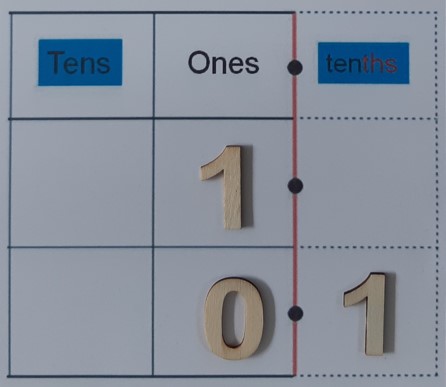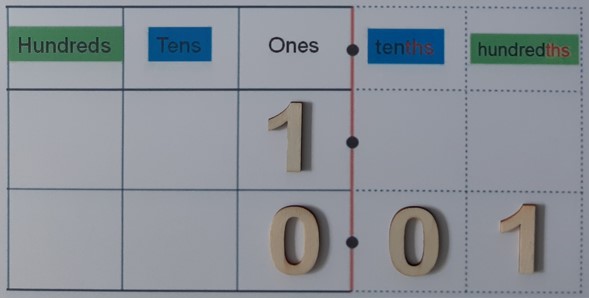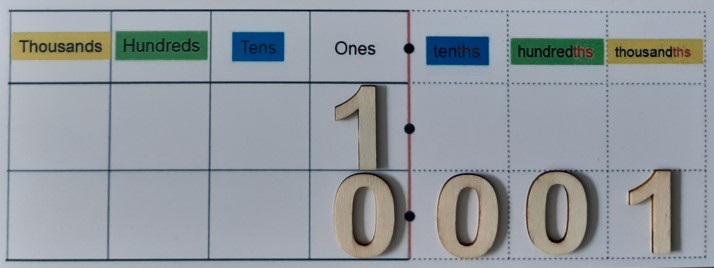Dividing a single digit by 10, 100 or 1000
Using a place value grid, we know that when we divide a number by 10 , the digits move one place to the right and we lose any final zero. So 10 ÷ 10 = 1.
If we divide a single digit by 10, the digit moves one place to the right, moving out of the whole number part of the place value grid, crossing the decimal point to end in the first decimal place - the tenths . If there are no whole ones, we usually record a zero in the ones place. So 1 ÷ 10 = 0.1

When we divide a number by 100, the digits move two places to the right and we lose any final zeroes. So 100 ÷ 100 = 1
If we divide a single digit by 100, the digit moves two places to the right, across the decimal point and into the second decimal place – the hundredths . We must record a zero in the first decimal place, to act as a placeholder, as there are no tenths. So 1 ÷ 100 = 0.01

When we divide a number by 1000, the digits move three places to the right and we lose any final zeroes. So 1000 ÷ 1000 = 1.
If we divide a single digit by 1000, the digit moves three places to the right, ending in the third decimal place – the thousandths . We must record a zero in the first and second decimal places, to act as placeholders, as there are no tenths or hundredths. So 1 ÷ 1000 = 0.001
